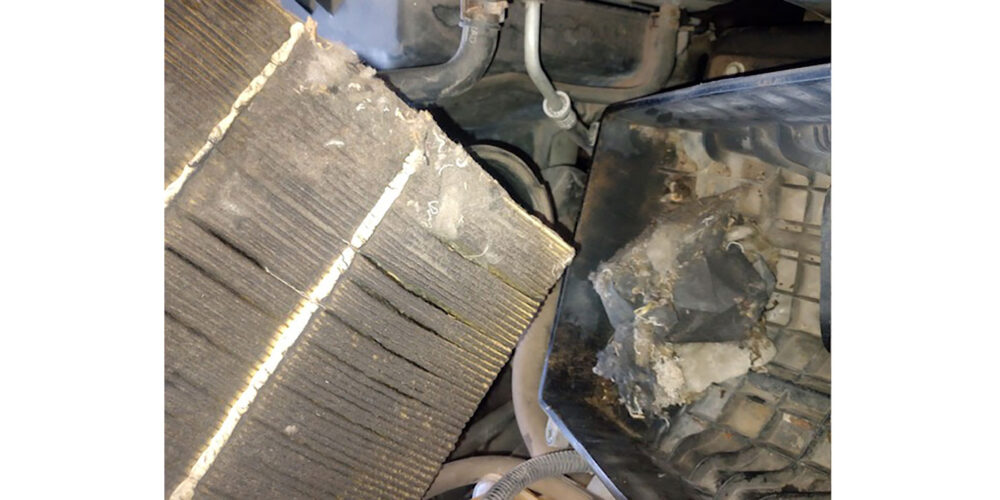Among the most common four speed-transmissions keeping shops busy today are the Ford 4R70E/W, the GM 4L60-E and the GM 4L80-E. In most cases, this typically equates to working on high-mileage vehicles. Aches and pains come with age and/or high mileage. In fact, when we see a person who looks beat and tattered, some may say, “Wow, that person has a lot of miles on him.” So, when a vehicle has acquired many miles, old or new, it may be the reason for a transmission failure which offers the owner his or her own aches and pains. Especially if they only have “use” in their vocabulary and not “maintenance.”
One such example occurred for David and Nick at Burleson Transmission. A 2001 Silverado showed up with 230,000 miles on its 4L80-E transmission. It arrived barely moving, making it impossible to conduct a road test. The transmission fluid indicated damage due to its dark color and the familiar burnt stink that accompanies this particular shade of black.
Out it came, in total need of a rebuild. Once completed and installed, the rebuild junior tech took it for a road test. He noticed that it would intermittently have a harsh shift into second gear. Other times it would slide into gear and then it would shift perfectly into second gear.
The 1-2 shift transition on many of these four-speeds has always been difficult due to a large ratio spread. The 4L80-E is not as steep as others, but it does have a first gear ratio of 2:48 to 1 shifting up to 1:48 to 1. Having a low roller clutch for first allows for a non-synchronous shift into second when the intermediate clutch applies. This really helps in making that transition as smooth as possible. So, for this to slip on the shift, then at times shift well and other times be harsh, it points to a line pressure control problem.
David checked it for codes and there were none. He then took it out for a road test and noticed the engine was not running well. With over 200,000 miles that wasn’t too much of a surprise. At a quarter throttle, the 1-2 shift would slide bump. At normal throttle it would slam. At heavy throttle, the shift was normal.
In looking at the PIDs in his scan tool, he noticed that the TPS PID was erratic. Once he came back to the shop, he headed towards the TPS to inspect it. In doing so, he noticed the air duct tube to the air box was loose. He then opened the box and discovered a clogged filter (see figure 1, above). He decided to install a new filter before attempting any further diagnostics—and this decision proved to be a good call. The engine ran much better, and the transmission functioned as it should.
A line pressure gauge would have revealed incorrect pressures producing the slip and bang, exposing the effect this clogged filter had on engine load. It is interesting to see the effect it also had on the TPS PID. A simple air filter caused a major repair headache for the owner—and it would continue to malfunction and fail if it were not for the good tech at Burleson “Physician” Transmission.














